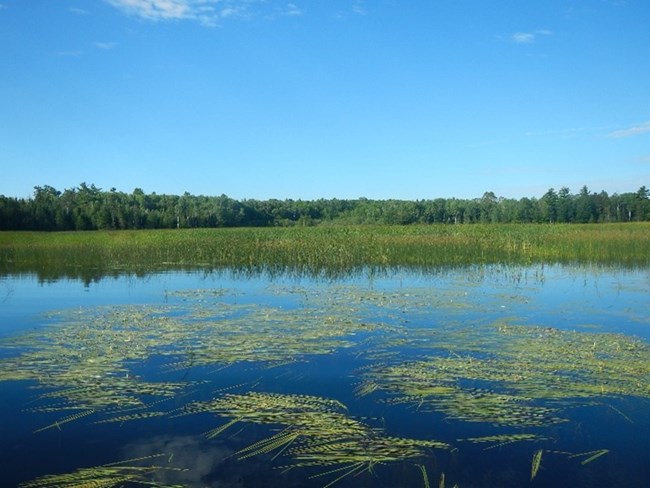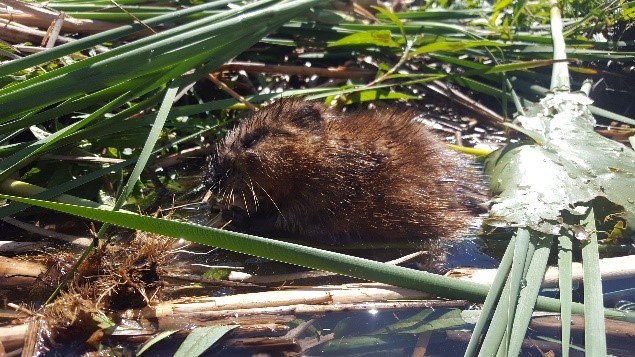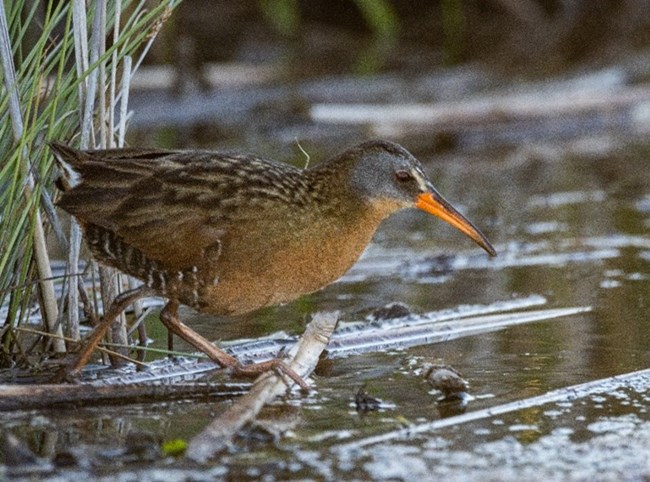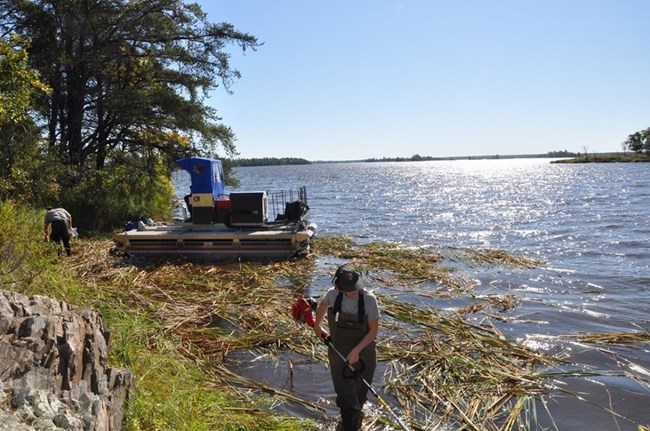
NPS 
NPS Photo Wetlands can usually be found at the edges of aquatic (water) or terrestrial (land) ecosystems. In fact, they often bridge the gap between the two. They are defined by their water-saturated soil and their ability to support plants that thrive in that kind of soil. The wetlands most commonly seen in the park are marshes. These wetlands are dominated by soft, herbaceous plants such as reeds, sedges, cattails and other grasses.Another type of wetland found in Voyageurs is a bog. Bogs have soft, spongy ground that contains peat, or partially decayed plant matter. Plants that can be found in bogs include cranberries, sphagnum moss, and carnivorous plants like sundews and pitcher plants. These habitats take hundreds or thousands of years to form. 
NPS photo Only certain species have what it takes to live in the park’s wetlands. Some, like the muskrat, are perfectly adapted to marsh life. Their webbed feet make swimming through the cattails easy, and their thick fur insulates them from the cold water. Muskrat homes are often huts made from cattails and other wetland plants. These inconspicuous little rodents eat aquatic plants, helping to keep marshes open and not choked with vegetation. Other mammals that make their homes in the marsh are river otters, mink, and beavers. Even moose can be spotted there, knee-deep in water eating their fill of flora. Many other mammals will venture to the edges of wetlands to drink or forage for food as well. 
NPS Photo/Hargis 
NPS photo Non-native hybrid cattails (Typha x. glauca) have invaded most wetlands around Voyageurs National Park. Invasive cattails displace native vegetation, reduce quality of fish and wildlife habitat, impair recreational opportunities like boating and fishing, and degrade cultural resources, especially for important plants like wild rice (Zizania palustris). The large lakes in the park (Rainy, Namakan, Kabetogama, Sand Point, and Crane) are designated "Outstanding Resource Value Waters" by the State of Minnesota (Minn. R.7050.0250-0335) where aquatic herbicide use is prohibited, making control of invasive cattails more challenging. In 2015, Voyageurs National Park staff started the Voyageurs Wetland Restoration Project to restore wetlands that had been degraded by invasive cattails and other factors. The goal of this project is to mechanically remove cattail and other invasive plants and restore native vegetation, such as wild rice, using new and established techniques. Our project is also evaluating the effectiveness of our restoration strategies for their use in Voyageurs National Park and the surrounding region. |
Last updated: March 8, 2023
